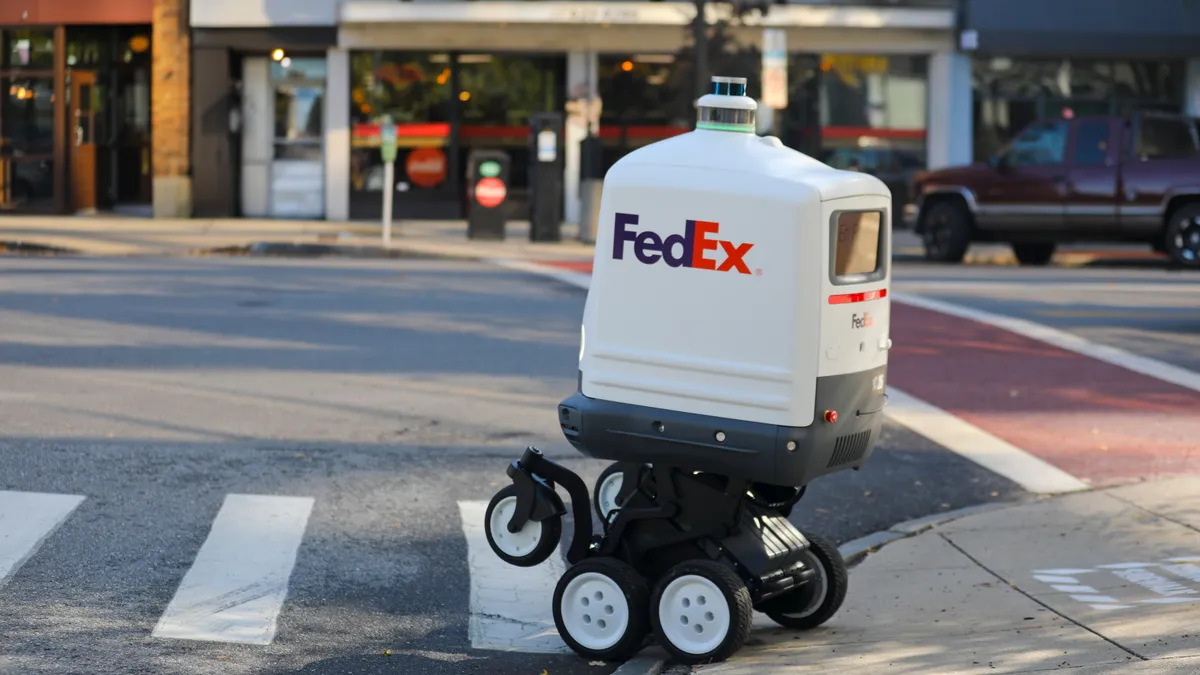Dive Brief:
- Mobility-as-a-Service (MaaS) and autonomous road-based delivery vehicles will be crucial in the near-term as cities increasingly look for efficient ways to move people and goods, according to a new report from Lux Research.
- With cities focused on alleviating congestion and providing alternatives to gas-powered vehicles, the report said growth will continue in areas like ride-hailing, micromobility and car-sharing. Offering these modes in a seamless, single-use MaaS platform will also be important for widespread adoption, the report says.
- Meanwhile, as cities look to manage their curb space amid increasing dependence on delivery services, the report said autonomous delivery robots hold promise. The group anticipates that autonomous parcel deliveries will generate over $33 billion in revenue by 2030. But delivery drones, which have been the subject of a great deal of speculation and hype, may not take hold in cities just yet, according to the report.
Dive Insight:
Cities will continue to face various pain points due to explosive population growth, including road congestion, if people are overly reliant on personal vehicles, Lux Research reported. Indeed, the annual costs from congestion in the United States will reach around $250 billion in lost productivity, fuel and other costs by 2025, the Texas Transportation Institute reports.
But MaaS is seen as a major short-term solution to solving congestion and helping city residents embrace a more multimodal way of getting around. Lime pledged to launch its own MaaS platform as a "one-stop shop" for riders seeking a shared electric vehicle, while Uber and Lyft have made similar moves to integrate transit details and their own micromobility offerings into their apps.
While MaaS uptake in the U.S. has been slower than in Europe, the report’s lead analyst Chad Goldberg said more cities are embracing MaaS and that trend will only accelerate in the coming years.
"I think ultimately, that would be the ideal future in all of these urban settings to have one single application that involves all of those micromobility, those ride-hailing applications," Goldberg said.
New delivery solutions are also seeking to alleviate congestion. Autonomous delivery robots like those from Postmates and Amazon are likely to have a big impact as package deliveries continue to be important during the pandemic, according to the Lux report.
But while drones have been hailed by some as the next frontier for urban package deliveries, Goldberg said they may be better used in rural settings as there will be less competition in the skies. Already, drones have been used for delivering medical supplies and specimens, and Goldberg said the regulatory landscape is still too uncertain for urban delivery drones to be widespread in the short-term.
"I'm not convinced you're going to see [delivery drones] in urban settings, compared to more of the rural domains, especially closer to where some of these fulfillment warehouses are, and where some of this airspace is a little less intuitive and less monitored compared to these urban settings," Goldberg said. "I think you'll see a lot more of these ground based, wheeled delivery robots, some of these more autonomous delivery vehicles."
If cities are to take advantage of these innovations as quickly as possible, Goldberg said further communication and cooperation between the public and private sectors will be crucial. He said the pandemic could have helped motivate a closer relationship between cities and private companies given that there has been a lot of mistrust in the past. But there are shifts afoot: Transportation for America (T4A) said recently, for example, that while cities must manage the curb themselves, engaging with the private sector will be key.
"There used to be a disconnect between the private and public sectors," Goldberg said. "And nowadays, you're seeing, especially with COVID, more of a push to pursue public-private partnerships, to help solve these opportunities together, rather than simply being segmented within those."












